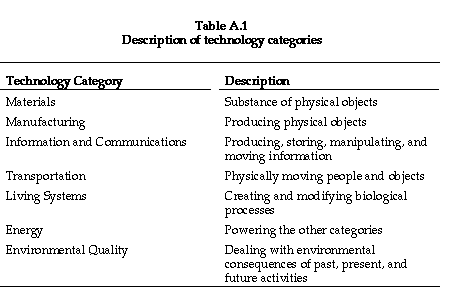
Since the requirement for a National Critical Technologies report was established in the 1990 Defense Appropriations Act, several critical technologies lists have come into existence. Various departments and agencies of the Federal government have carried out or publish critical technology assessments, including the Department of Defense, the Department of Commerce, and the National Aeronautics and Space Administration. Additionally, a number of private sector lists have been generated. Other industrialized countries have also identified national critical technologies. For example, both Germany and Japan engage in a formal Delphi process involving government, industry and academia to evaluate the importance and status of a broad set of technologies.
This list-making activity should not be seen as redundant. Different lists are generated for different purposes, and the technologies on these lists are selected for their potential to aid in achieving specific goals. That is, the technologies on different lists are "critical" for different reasons. In the case of the critical technologies activities of the Department of Defense, for example, technologies are examined in relation to five Future Joint Warfighting Capabilities most needed by the U.S. Combatant Commands. The Commerce Department's emerging technologies list, published in 1990, was based on market potential dictated by the department's mission to promote and improve commerce. Differing criteria, purposes and legislative references aside, many observers have noted strong similarities between the critical technology lists.[2] In a highly interdependent economy with substantial overlap between civilian and defense applications, this similarity is not surprising. Integrating various critical technologies lists and capturing the similarities--which reveal complex relationships within the economy and between sets of national and sub-national goals--in a consistently aggregated, rationally organized way was the first important task in producing this report.
Because the U.S. economy is broad and technologically advanced, many technologies are important to some aspect of economic prosperity or national security. Choosing those that are "critical" on the national level requires some careful thinking about definitions. The first necessary definition is that of "technologies" since "critical technologies" are a subset of the larger group. Technology involves knowledge. In order to differentiate technology from other forms of knowledge, this report defines technology as knowledge that has the following characteristics:
This definition excludes much basic science which is directed at pure understanding of natural phenomena. However, the definition is broad enough to include knowledge built on scientific understanding and knowledge acquired through experimentation or accident.
Once the realm of "technologies" is defined, it is necessary to define what we mean by "critical." The definition in this National Critical Technologies report assumes that the criticality of a technology is determined by the importance of the application to which the technology is put. That is,
criticality is derived from the importance of the outputs of the system of which the technology is a constituent part, as well as from the significance the technology has for enabling that system
This definition explicitly answers the question "Critical for what?" thereby helping to link policy objectives to choices of technologies. For example, since improvements in education at all levels are considered essential to the future economic prosperity and national security of the United States, education and training software which enables advanced education and training methods and systems is a critical technology that meets the definition above.
The 1995 National Critical Technologies list was created through a process of input from multiple constituencies in a traceable and reproducible manner, described in greater detail in Appendix B. The process began with a candidate list which included technologies appearing in the first Report of the National Critical Technologies Panel (March 1991), as well as the lists published by the Department of Commerce, Department of Defense, Department of Energy and by NASA. A four-level hierarchical structure was used to integrate lists based on different organizational schemes and levels of aggregation. Sample or illustrative applications to which the technologies contributed were also included, although the list of applications was not expected to be exhaustive. Technology experts were utilized to include knowledge of specific technologies and applications where existing lists did not contain a sufficient level of detail. In addition, the candidate list indicated whether each specific technology contributed primarily to economic prosperity, national security, or both.
The six major technology categories in the 1991 list[3] were changed to seven. The descriptions of the seven categories are shown in Table A.1. The candidate list classified technologies according to the nature of the skills and problems involved in their development, not by the technologies' applications. This focus on underlying technologies rather than applications streamlined the list. Many technologies support multiple applications, so an application-based taxonomy complicates a technology list by forcing the same technology to be placed in multiple categories. Technology focus was also deemed to be more helpful to users because it allowed them to see the breadth of influence of a technology and to determine whether a technology meets their requirements for criticality based on applications it supports.

 EP = Economic Prosperity; NS = National Security.
EP = Economic Prosperity; NS = National Security.
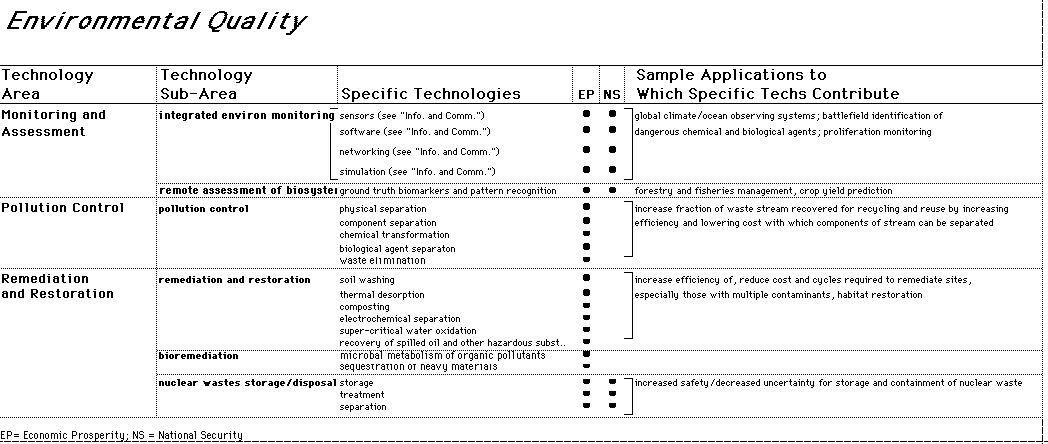
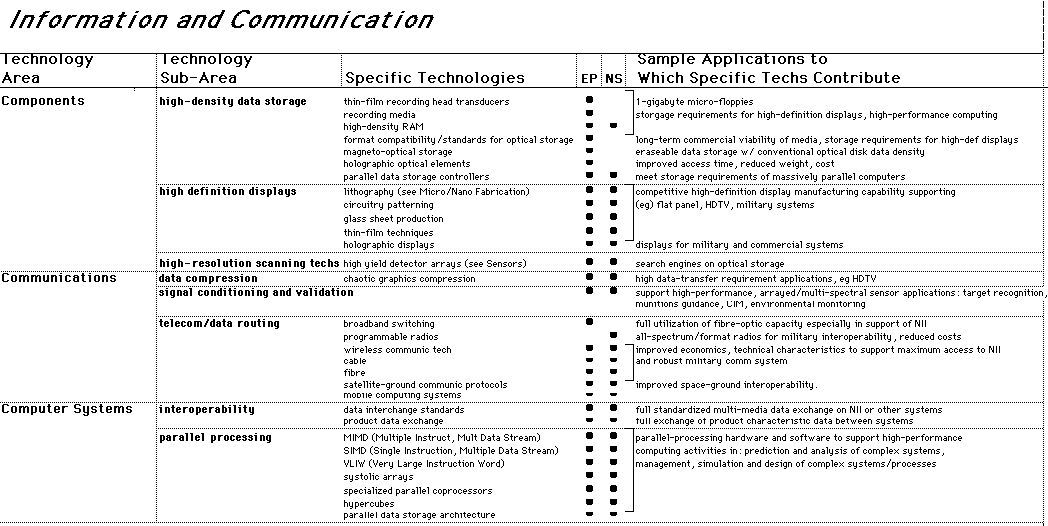
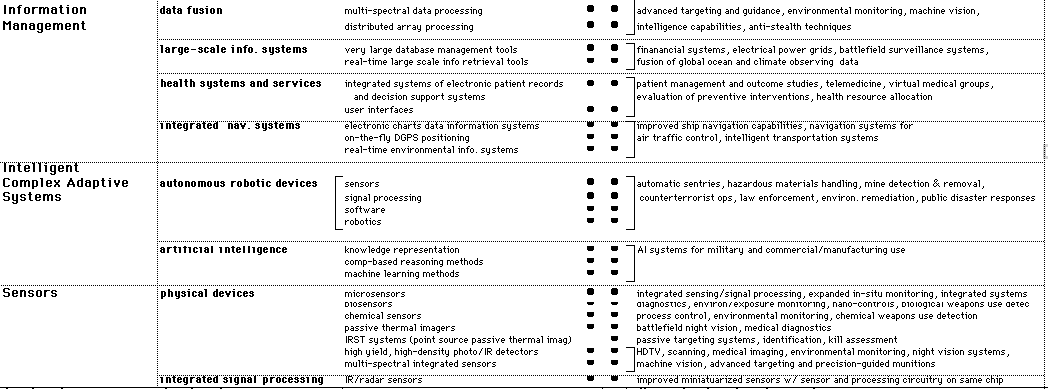
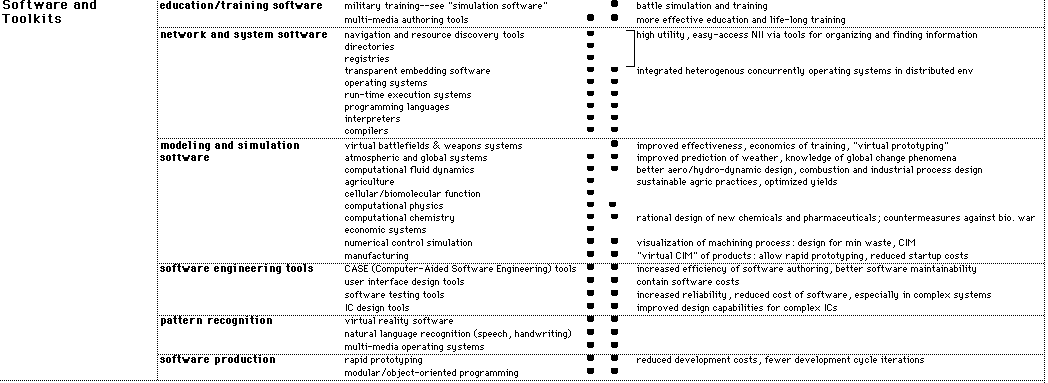 EP = Economic Prosperity; NS = National Security.
EP = Economic Prosperity; NS = National Security.
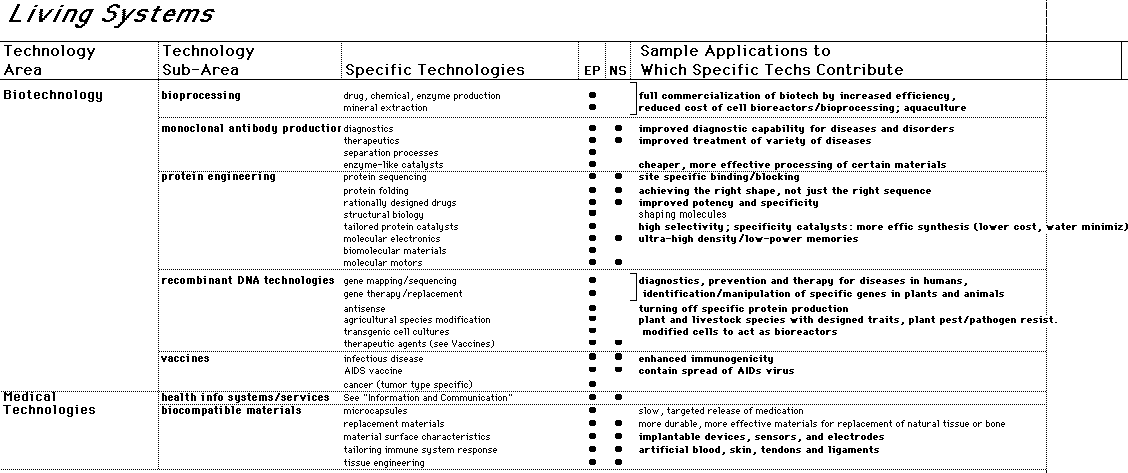
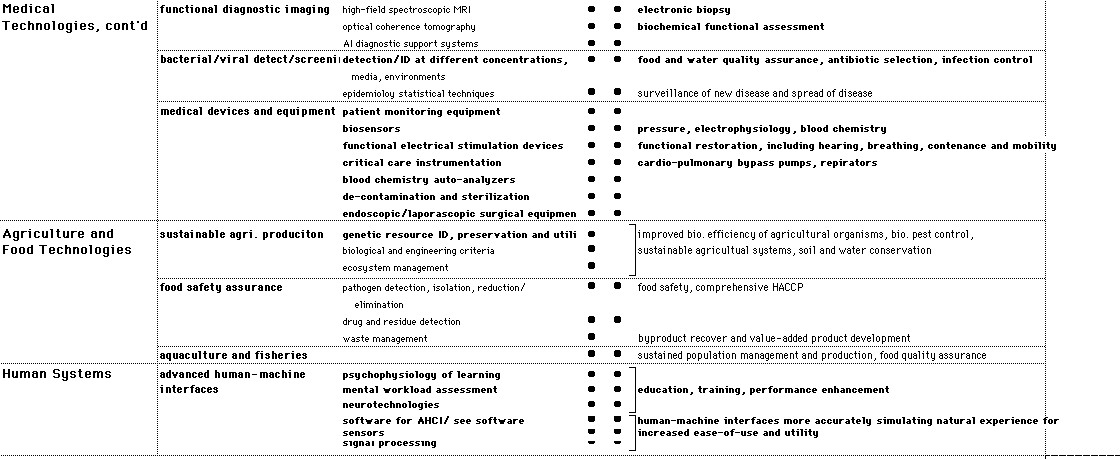 EP = Economic Prosperity; NS = National Security.
EP = Economic Prosperity; NS = National Security.
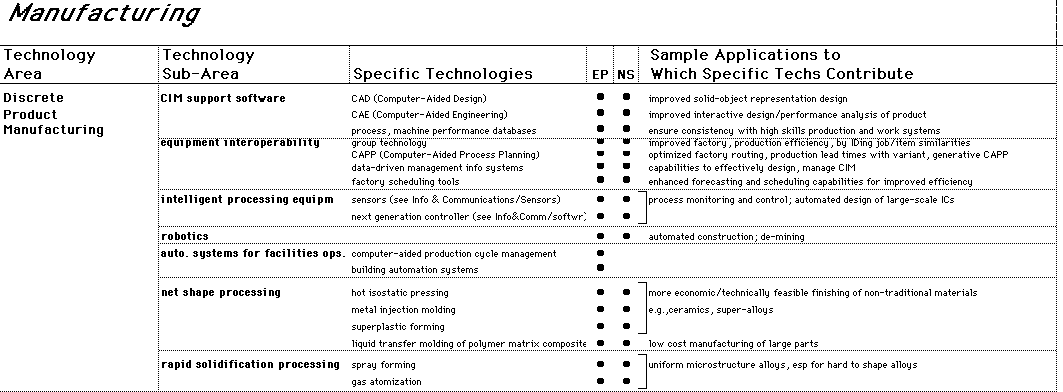
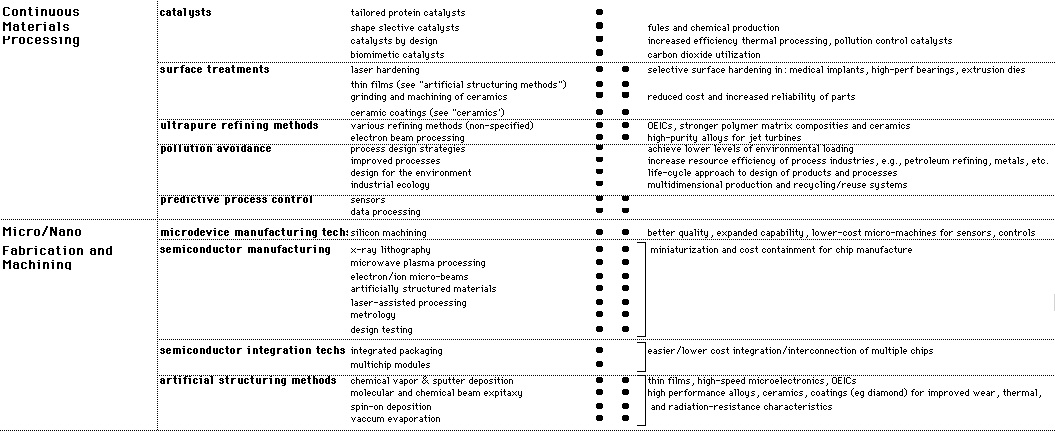 EP = Economic Prosperity; NS = National Security.
EP = Economic Prosperity; NS = National Security.
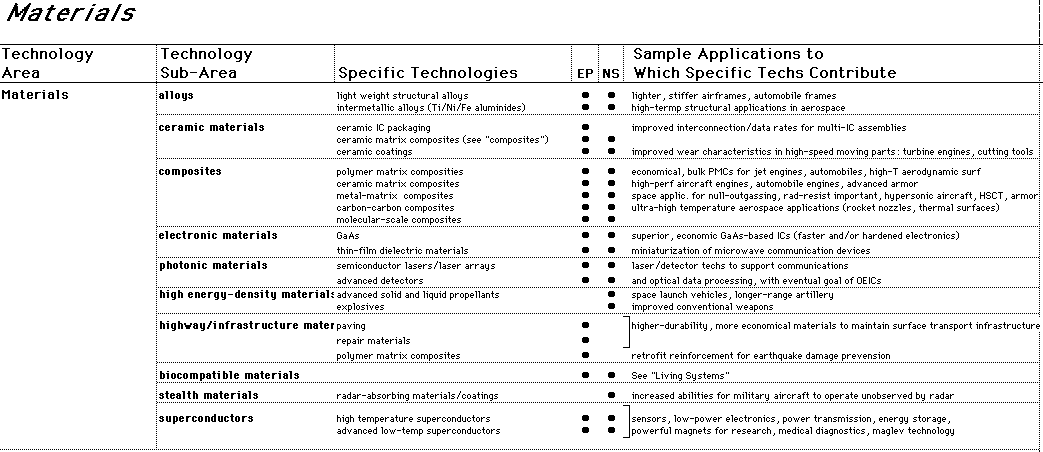
 EP = Economic Prosperity; NS = National Security.
EP = Economic Prosperity; NS = National Security.
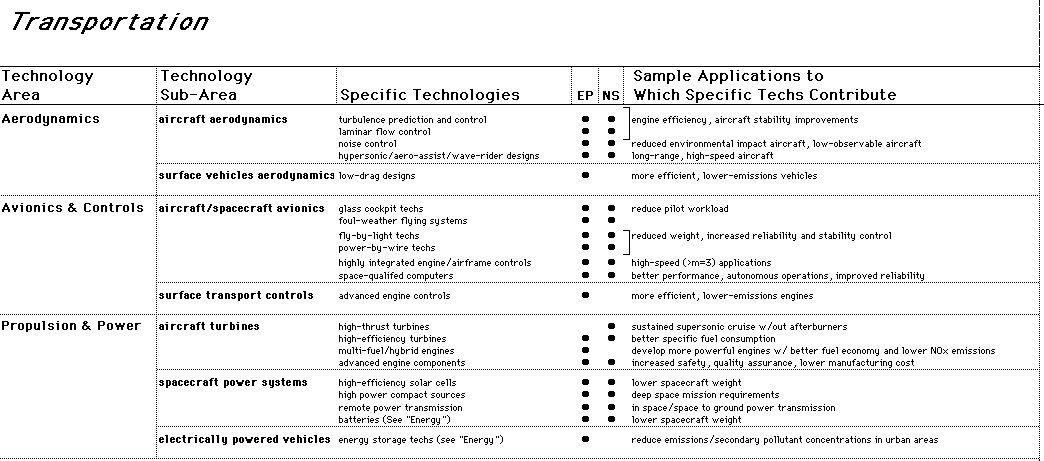
 EP = Economic Prosperity; NS = National Security.
EP = Economic Prosperity; NS = National Security.
[2] Comparisons of various critical technology lists may be found in Mogee, Mary Ellen, Technology Policy and Critical Technologies: A Summary of Recent Reports, The Manufacturing Forum, National Academy Press, Washington, D.C., December 1991 and in Knezo, Genevieve J., Critical Technologies: Legislative and Executive Branch Activities, Congressional Research Service 93-734 SPR, Washington, D.C., 5 August 1993.
[3] The 1993 Panel did not re-write or alter the 1991 list.